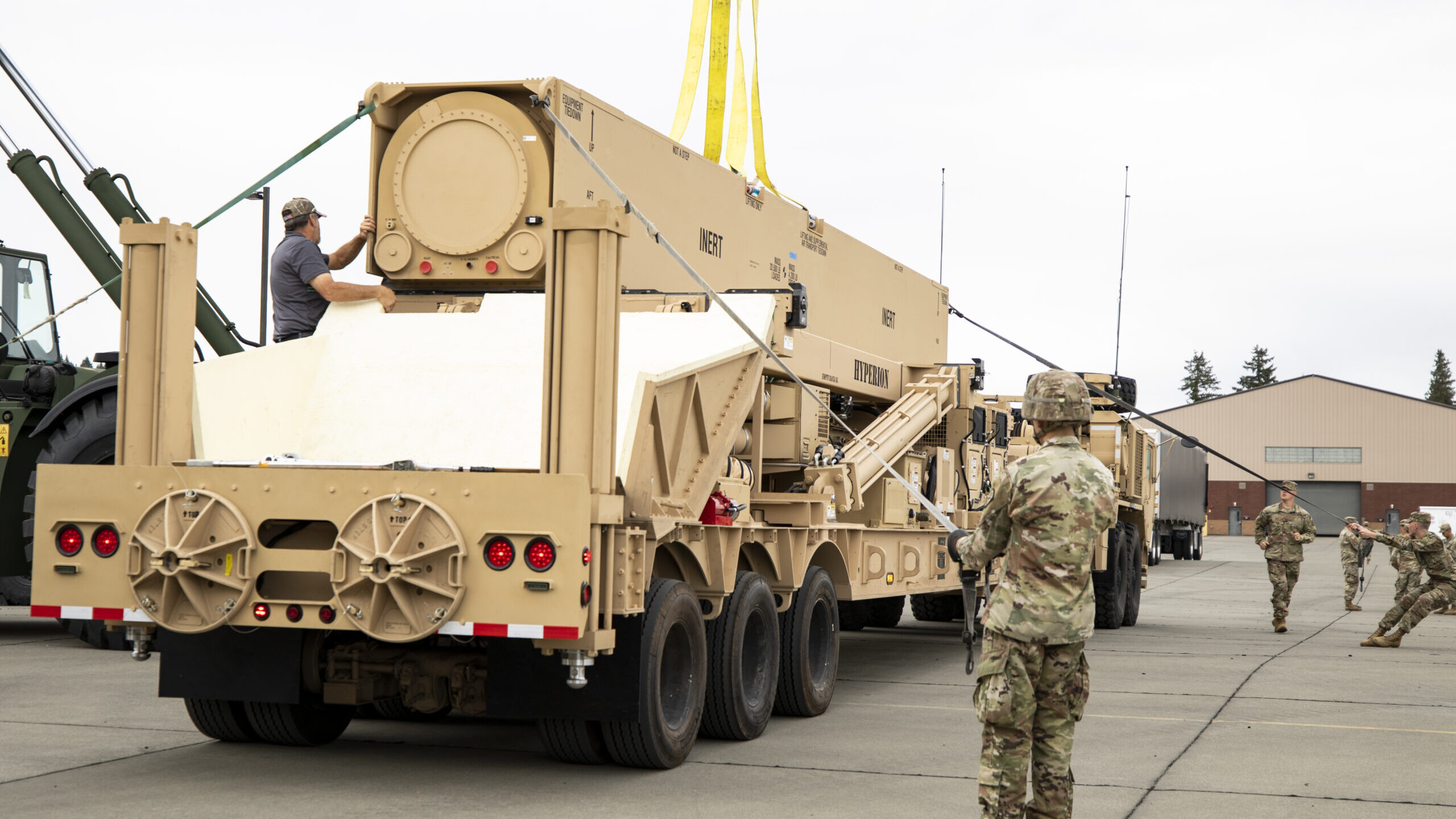As the hypersonic race intensifies with immense pressure on the United States to field an operational hypersonic missile, the US Army has sounded the bugle for its first deployment next year.
‘Restrictive’ Chinese Drones No Good! Bayraktar Says Beijing’s Customers Are Turning To Turkey For TB2 Drones
China’s Record-Shattering Speed! Australian Invention Propels Chinese Researchers To Achieve A Mind-Boggling Speed Of Mach 33
The Under Secretary of the US Army, Gabe Camarillo, announced that the first American hypersonic weapon would continue to be deployed as planned before the end of the year. He was speaking at the Defense News Conference 2022. “I don’t expect any delays,” Camarillo told the conference.
The Under Secretary claimed that to deploy its capabilities more swiftly, the Army’s Rapid Capabilities and Critical Technologies Office (RCCTO) had developed the new weapons system with previously unheard-of speed and effectiveness.
The announcement comes when China and Russia are making mammoth leaps in their respective hypersonic programs, while the United States is yet to field an operational hypersonic weapon.
Camarillo further said the Army was still on schedule to start deploying 24 new systems as part of its massive modernization program in 2023.
The multibillion-dollar endeavor of modernization encompasses a broad spectrum of next-generation battlefield capabilities as the service shifts away from counterterrorist operations to near-peer threats in China and Russia. These include new ground vehicles, long-range missiles, and improved network tools.

The land-based, ground-launched Long-Range Hypersonic Weapon, one of the service’s top 35 modernization priorities, is being swiftly developed by the Army’s Rapid Capabilities and Critical Technologies Office to field an operational capability in fiscal 2023.
Army Lt. Gen. Neil Thurgood, in charge of the project, stated last month that the US Army aims to launch the first live rounds of its hypersonic missile in “approximately” six months.
The Army provided the hypersonic battery to members of the I Corps’ 5th Battalion, 3rd Field Artillery Regiment, and 17th Field Artillery Brigade last September at Joint Base Lewis-McChord in Washington.
A battery operations center, four transporter erector launchers, and modified trucks and trailers were all part of the equipment. There are two rounds in each launcher.
Soldiers have been given a head start on training, including loading and unloading the equipment on C-130s, thanks to the equipment being delivered more than a year before the live rounds. The unit most recently executed a simulated live fire incident with US Indo-Pacific Command and the theatre fires center to practice working through the fire kill chain.
Long-Range Hypersonic Weapon – Coming Soon!
Excitement about the possibility of long-range precision firing especially hypersonic missile technology, in modern-day conflict, has increased tremendously, making it the US Army’s top priority for modernization.
According to reports, China conducted live-fire drills close to Pingtan Island in the Taiwan Strait, launching DF-17 missiles from a ground-based station in August.
A few days before those drills, Beijing had unveiled the hypersonic weapon system in a video commemorating the People’s Liberation Army’s founding anniversary. On the other hand, Russia became the first country in the world to use hypersonic weapons (Kinzhal) in combat.

With the US Army’s Long Range Hypersonic Weapon well on schedule, US Army officials are now considering how to prepare for the next steps. A spate of rigorous testing will precede the missile’s commissioning into the US Army.
Before the final certification test flight in 2023, there will be several other test flights, said Army Lt. Gen. Neil Thurgood, director for hypersonic, directed energy, space, and rapid acquisition in the office of the assistant secretary of the Army for acquisition, logistics, and technology.
The system, described in a Congressional Research Service report titled “The US Army’s Long-Range Hypersonic Weapon,” is said to have a reported range of 1,725 miles and consists of a ground-launched missile with a hypersonic glide body as well as related transport, support, and fire control equipment.
According to the report, the land-based, truck-launched weapon is equipped with hypersonic missiles with a maximum speed of more than 3,800 miles per hour.
In addition to the Long Range Hypersonic Weapon, the US Army is also collaborating with the Navy on the Common Hypersonic Glide Body, which the naval service will use for its Conventional Prompt Strike hypersonic weapon. The Navy will field its first live rounds in FY25 as the Army buys its second LRHW battery.

The Long Range Hypersonic weapon comprises a sizable rocket booster that transports the Common-Hypersonic Glide Body (C-HGB) in a nose cone without any power. The C-HGB, which glides at hypersonic speeds as it falls toward its target, is released by the rocket once it has attained a substantial altitude and speed.
The report further states that the missile can ascend to the summit and remain just beyond the Earth’s atmosphere beyond the range of air and missile defense systems until they are ready to strike, and by then, it’s too late to react.
In its FY23 budget, the Army asked for $249 million to fund the manufacture of the second battery of the LRHW no later than the fourth quarter of FY25. The Army’s Program Executive Office Missiles and Space acquisition office is expected to take up the LRHW program in FY24.
- Contact the author at sakshi.tiwari9555@gmail.com
- Follow EurAsian Times on Google News




